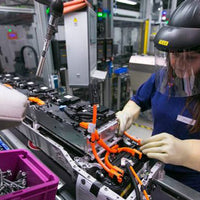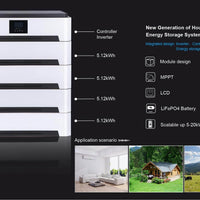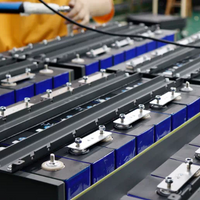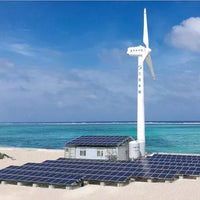Batteries have been used for more than 100 years since their invention, and solar power has been used for more than 50 years. In the early days of the solar industry, solar power plants were often deployed far from the grid, important to power remote facilities and homes. As technology advances and time passes, solar power generation facilities begin to connect directly to the grid. Today, more and more solar power generation facilities are deployed with battery energy storage systems.
As governments and companies offer incentives to lower costs, more users are deploying solar power to save on electricity costs. Today, solar + energy storage systems are an important part of the booming solar industry, and their deployment is accelerating.
Because intermittent solar power can adversely affect grid operations, the state does not allow new solar power plants to indiscriminately transmit their excess power to the grid. Hawaii's Public Utilities Commission began restricting the deployment of solar power plants connected directly to the grid in October 2015, becoming the first U.S. regulator to do so. Many of Hawaii's customers who operate solar power facilities deploy battery storage systems to ensure that they store excess power and use it during peak demand, rather than sending it directly to the grid. As a result, the relationship between solar power and battery storage systems is now closer.
Since then, electricity rates in some American states have become more complex, in part to prevent solar power from being exported to the grid at inappropriate times. The industry is encouraging most solar customers to deploy battery storage systems. While the additional cost of deploying battery energy storage systems makes the financial return on solar power less than a direct connection to the grid model, battery energy storage systems provide additional flexibility and control to the grid, which is increasingly important for companies and residential users. The signs for these industries are clear: energy storage systems will be part of most solar power generation in the future.
1. Suppliers of solar power generation facilities supply supporting battery products
Solar + Energy storage has long been backed by energy storage system suppliers, and some large solar installers (such as Sunrun, SunPower, and Tesla) have started supplying their own battery products to their customers in the past few years.
As the market share of solar + energy storage projects has soared, the companies say, it is more attractive for users to deploy systems that have good performance and long working life.
Marketing, messaging and industry influence will raise awareness among consumers, companies, and governments at a time when major solar developers are moving into battery production. Their smaller rivals are also taking steps to make sure they don't fall behind.
2.Utilities and policymakers supply incentives
Battery energy storage systems have emerged as a potential solution to the duck curve problem that California utilities are known for, as the high penetration rate of solar power generation is increasingly affecting the grid. But it wasn't until some industry experts compared the cost of building a natural-gas peak-shaving plant in Oxnard, Calif., with the cost of deploying battery storage systems that utilities and regulators realized they were cost-effective in offsetting the intermittent nature of renewable energy. Today, many state and local governments are encouraging the deployment of grid-side and user-side battery storage systems through initiatives such as California's Self-generating Incentives (SGIP) and New York's High-capacity Energy Storage Incentives.
These incentives have a direct or indirect impact on energy storage deployment requirements. Just as government incentives for energy technology date back to the industrial revolution, this means that companies and consumers should embrace the technology aggressively.
3. Promulgate the safety standard of battery energy storage system
One of the most important signs that battery energy storage systems are now a mainstream energy storage technology is incorporating them into the latest regulations and standards. The U.S. building and electrical code, released in 2018, includes battery energy storage systems, but UL9540 has not yet been included in the safety test.
The NFPA855 standard specification was released in late 2019 following productive communication between industry vendors and the National Fire Protection Association (NFPA), a key safety regulator. In the United States, the newly published electrical code is already in line with NFPA855, providing regulators and building authorities with the same level of guidance as equipment such as heating, ventilation, air conditioning, and water heaters.
In addition to ensuring safe deployment, these standardization requirements help construction departments and regulators enforce safety requirements, making it easier for them to deal with the safety of batteries and related equipment. As regulators develop routine procedures to allow battery storage systems to be installed, the risks associated with these critical steps will be reduced, resulting in shorter project deployment times, lower costs, and improved customer experience. As with previous standards, this will continue to drive the growth of solar + energy storage.
Future development of the battery energy storage system
Today, a growing number of companies and residential users are able to use battery storage systems to provide the basic services needed to keep the grid stable. Utilities will continue to push for increasingly complex rate structures to more accurately reflect the environmental impact of their costs and power supply. As climate change leads to extreme weather and power outages, the value, and importance of battery energy storage systems will increase significantly. Check our PowerBox Series & PowerWall Series for your Project!








0 comments